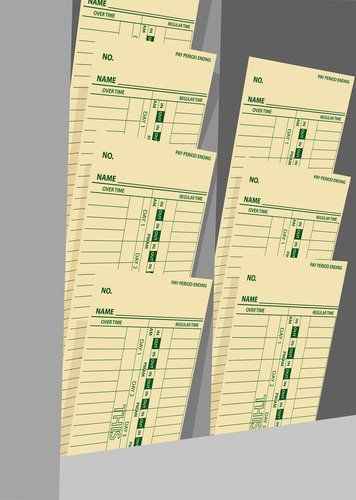




Fill out our short questionnaire to see
if we are a good fit!

One of the top questions I receive is how to determine if someone is an employee (W-2 worker) or an independent contractor (1099-MISC worker). Before you can determine how to pay a worker, you need to determine the relationship that exists.
Definition of Workers:
An employee is a person who works in the service of another person or organization. They are typically paid either a salary or hourly and will fill out a timecard. The employer will control what work the employee performs.
The employee qualifies for unemployment compensation where an independent contractor would not.
An independent contractor is a person/business that offers services to the general public. They may have a specific license; such as a construction worker or accountant. They should always have a business license in the city/town they reside. Independent contractors will be hired by signing a contract and will provide invoices in order to be paid.
Common Law Rules:
There are 3 rules that the IRS will review to determine the status of a worker:
Official Determination:
If you are unsure of a specific situation, the IRS has a form, the SS-8, that when filled out and turned in, the IRS will officially determine the status of the worker. We recommend that you review this document so you can see what the IRS will be asking in order to decide if the worker is an employee or independent contractor. Click here for a copy.
Misclassification of Worker:
If you classify a worker as an independent contractor and are wrong, you may be held liable for employment taxes for that worker. This means fines, penalties and back taxes!! Be careful, because the State of CA, Employment Development Department, is very aggressive and will charge penalties and interest on the payroll taxes you should have paid on the worker.
Construction workers are the most misclassified. If a “contractor or sub-contractor” does not have a license, they are an employee.
Volunteer Classification:
The IRS allows eligible employers the opportunity to participate in a low-cost option for correcting the status of misclassified workers from independent contractors to employees. The program requires a payment of just over one percent of the wages paid to the reclassified worker for the past year with no interest, penalties or risk of future audit for any prior years. While enticing, it does not come without risks.
Determining the Status:
Whether a worker is an employee or an independent contractor depends on some factors.
1. Do you instruct or supervise the person while he or she is working?
Independent contractors are free to do jobs in their own way, using specific methods they choose. A person or firm engages an independent contractor for the job’s end result. When a worker is required to follow company procedure manuals and/or is given specific instructions on how to perform the work, the worker is typically an employee.
2. Can the worker quit or be discharged (fired) at any time?
If you have the right to fire the worker without notice, it indicates that you have the right to control the worker. Independent contractors are engaged to do specific jobs and cannot be fired before the job is complete unless they violate the terms of the contract. They are not free to quit and walk away until the job is complete. For example, if a shoe store owner hires an attorney to review his or her lease, the attorney would get paid only after satisfactory completion of the job.
3. Is the work being performed part of your regular business?
Work which is a necessary part of the regular trade or business is normally done by employees. For example, a sales clerk is selling shoes in a shoe store. A shoe store owner could not operate without sales clerks to sell shoes. On the other hand, a plumber engaged to fix the pipes in the bathroom of the store is performing a service on a onetime or occasional basis that is not an essential part of the purpose of the business enterprise. A CPA engaged to prepare tax returns and financial statements for the business would also be an example of an independent contractor.
4. Does the worker have a separately established business?
When individuals hold themselves out to the general public as available to perform services similar to those performed for you, it is evidence that the individuals are operating separately established businesses and would normally be independent contractors. Independent contractors are free to hire employees and assign the work to others in any way they choose. Independent contractors have the authority to fire their employees without your knowledge or consent. Independent contractors can normally advertise their services in newspapers and/or publications, yellow page listings, and/or seek new customers through the use of business cards.
5. Is the worker free to make business decisions which affect his or her ability to profit from the work?
An individual is normally an independent contractor when he or she is free to make business decisions which impact his or her ability to profit or suffer a loss. This involves real economic risk, not just the risk of not getting paid. These decisions would normally involve the acquisition, use, and/or disposition of equipment, facilities, and stock in trade which are under his or her control. Further examples of the ability to make economic business decisions include the amount and type of
advertising for the business, the priority in which assignments are worked, and selection of the types and amounts of insurance coverage for the business.
6. Does the individual have a substantial investment which would subject him or her to a financial risk of loss?
Independent contractors furnish the tools, equipment, and supplies needed to perform the work. Independent contractors normally have an investment in the items needed to complete their tasks. To the extent necessary for the specific type of business, independent contractors provide their own business facility.
7. Do you have employees who do the same type of work?
If the work being done is basically the same as work that is normally done by your employees, it indicates that the worker is an employee. This applies even if the work is being done on a onetime basis. For instance, to handle an extra workload or replace an employee who is on vacation, a worker is hired to fill in on a temporary basis. This worker is a temporary employee, not an independent contractor.
(Note: If you contract with a temporary agency to provide you with a worker, the worker is normally an employee, but may be an employee of the temporary agency. You may wish to request EDD’s Information Sheet, DE 231F, on the subject of temporary service and leasing employers.)
8. Do you furnish the tools, equipment, or supplies used to perform the work?
Independent business people furnish the tools, equipment, and supplies needed to perform the work. Independent contractors normally have an investment in the items needed to complete their tasks.
9. Is the work considered unskilled or semi-skilled labor?
The courts and the California Unemployment Insurance Appeals Board have held that workers who are considered unskilled or semi-skilled are the type of workers the law is meant to protect and are generally employees.
10. Do you provide training for the worker?
In skilled or semi-skilled work, independent contractors usually do not need training. If training is required to do the task, it is an indication that the worker is an employee.
11. Is the worker paid a fixed salary, an hourly wage, or paid based on a piece rate basis?
Independent contractors agree to do a job and bill for the service performed. Payments to independent contractors for labor or services are made upon the completion of the project or completion of the performance of specific portions of the project.
12. Did the worker previously perform the same or similar services for you as an employee?
If the worker previously performed the same or similar service for you as an employee, it is an indication that the individual is still an employee.
13. Does the worker believe that he or she is an employee?
Although belief of the parties is not controlling, intent of the parties is a factor to consider when making an employment or independent contractor determination. When both the worker and principal believe the worker is an independent contractor, an argument exists to support an independent contractor relationship between the parties.
Interpretations of Answers
Depending on the services being performed and the type of occupation, this questionnaire may produce a variety of results. There may be some factors which lean toward employment and some which lean toward independence.
The answers to questions 1 through 6 provide a strong indication of the presence or absence of direction and control. The answers to questions 7 through 13 when joined with other evidence may carry greater weight when indicating the presence or absence of direction and control.






